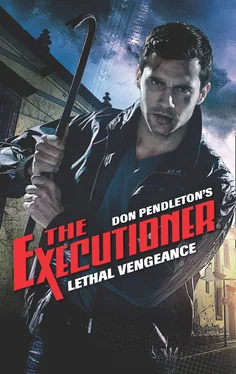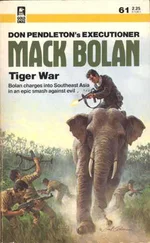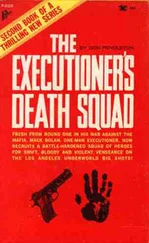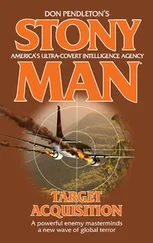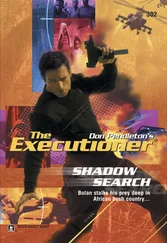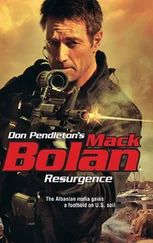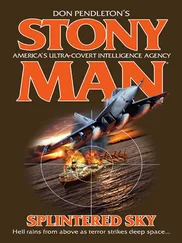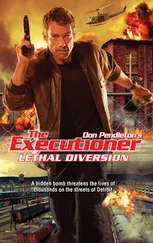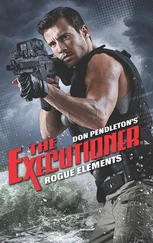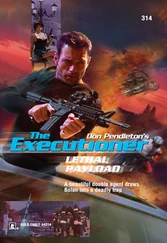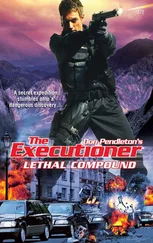“You’ve studied up,” Bolan observed.
“Know the enemy. Never let anybody tell you they’re all carbon-copy, cut and dried.”
“So, if a pair of psychos snatched Hal, he could well be dead by now and we have no way to start looking for them. Two Latinos in Mexico? Try looking for a needle in a needle factory.”
“I know. We have to try, though.”
“Right. First thing,” Bolan observed, “will be acquiring hardware on the wrong side of the border.”
Mexico had strict laws regulating guns, at least on paper, restricting possession of most types and calibers to the military and law enforcement. The country’s only legal gun store—the Directorate of Arms and Munitions Sales—stood behind walls on a military base outside Mexico City. Its customers had to undergo months of background checks, involving six separate documents, and were frisked on arrival by uniformed soldiers.
That said, Mexico’s version of the US Second Amendment, written in 1857, guaranteed all citizens and legal foreign residents the right to bear arms, but stipulated that federal law “will determine the cases, conditions, requirements and places” of gun ownership. The net result: while the one and only army gun store sold an average of thirty-eight firearms per day to civilians, smugglers brought an estimated 580 weapons into Mexico from the United States. Others doubtless arrived on flights of foreign origin or passed through Mexico’s forty-one seaports on the Atlantic and Pacific oceans, the Caribbean Sea and the Gulf of Mexico.
The results of that traffic in arms—and in drugs—had been making global headlines for the past thirteen years, since officials acknowledged their chaotic, ongoing drug war. At last rough count, the butcher’s bill included 250,000 dead and 30,000 missing, with 1.6 million persons displaced from their homes. The official body count so far included 12,456 cartel members; 4,020 federal, state and municipal police officers; plus 395 soldiers slain and 137 missing, presumed dead.
Hell on Earth, in simple terms—and that was without adding in the daily slaughter of civilians in places like Ciudad Juárez and Matamoros by human predators for the sheer love of killing.
“Tell me more about the killers’ playground,” Bolan said.
“Feminicide covers a world of kinks and fetishes,” Price said. “As I mentioned, no one really knows how many girls and women have been killed or when it started ramping up. Local authorities downplay it with an eye toward tourism and foreign investment in factories, and the victims never found go on the books as runaways. Officially, Chihuahua police admit 260 murders since they started keeping track in 1993, claiming only seventy-six fit ‘serial’ parameters with rape, torture and mutilation. But that’s ridiculous. Women’s groups peg the total somewhere between four and fifteen hundred when they add in missing persons.”
“How bad is it, really?” Bolan asked.
“Amnesty International counted 370 by 2005. Chihuahua prosecutors finally admitted 270 murders statewide in 2010, with 247 inside Juárez. They logged another 300-plus in 2011, with 59 percent in the state capital. Since then, the yearly stats go up and down like yo-yos, depending on who you trust.”
“With no convictions?”
“Sure, a few. In 1996 Omar Sharif—a bus driver from Egypt, not the actor—went down for three murders, sentenced to thirty years, but the killings escalated after he went away. At that point, cops claimed he was part of a gang called Los Rebeldes—that’s ‘The Rebels’—who kept killing after he was put away. Police arrested five of his alleged accomplices then cut them loose for lack of evidence. Sharif died during his fourth year in prison.”
“Any others?”
“A few. In 2001, police nabbed an alleged pair of team killers and charged them with eight homicides. One died during interrogation. Then his buddy confessed but later recanted, claiming police torture, and out goes that case.
“In 2008, prosecutors charged Sergio Barraza with killing one teenage girl, but the court acquitted him for lack of evidence and he split for parts unknown. They later tried him again in absentia —that’s a thing down here, no double jeopardy—and he was convicted, but they still haven’t found him. Meanwhile his victim’s mother was assassinated by an unknown gunman while picketing the governor’s palace—shot once in the head at point-blank range.”
Bolan rarely swore but now said, “Sounds like a steaming crock of shit.”
“And still continuing today, although most of the press in Mexico has tried to play it down,” Price said.
“Sounds like they need a wakeup call.”
“I’d say. And then some.” She frowned and asked, “What are you packing?”
“Flying in from LA?” he replied. “Not a thing.”
“Just as well. We’ve got a friend at the US Consulate in Ciudad Juárez. He’s CIA, name’s Tim Ross.”
As she spoke, Price handed Bolan what appeared to be a passport photo of a white man, late twenties, with hair a little on the long side and a well-trimmed Vandyke. Bolan committed the face to memory and passed the photo back to her, asking, “What does he know?”
“Nothing about the program, you or Hal. He helps us out from time to time with hardware, paperwork, whatever. He pulled two tours in the sandbox with the 1st Battalion, 5th Marines before he joined the Company, but I’d discourage getting him involved beyond delivery of gear when you arrive.”
“You’ll make the contact?”
“That’s affirmative. Just let me have your wish list.”
There were cocktail napkins in a slot beside the folding table. Bolan took out a pen, filled up half of one and then handed Price his list.
She read it over. “You’re pulling out all the stops.”
“I don’t see any other way to play it.”
“Right,” she said. “You’re driving over, then?”
“I’ve got a rental in the airport’s short-term parking lot.”
“Okay. I’ll set a meeting on the other side for you and Ross, then text you an address.”
“Sounds good.”
“Thoughts on the process, once you’ve gone across?”
“No suspects and no motive,” Bolan said. “The only way I see to play that hand is to bet the limit and keep raising until somebody folds.”
“You know we can’t help with the federal or state police across the line. Even if we could tell them what you’re doing over there, who knows which officers are trustworthy?”
“I know of at least one. But for this mission I’ll figure none of them and work from there,” Bolan replied.
It was, he knew, a decent rule of thumb for Mexico. The federales were divided into two departments. The Federal Judicial Police, founded in 1928, was disbanded in 2002 due to its own rampant corruption and criminal activity. It was replaced by the Federal Investigative Agency and attached to Mexico’s Secretariat of Public Safety as a “preventive” force against crime. Its counterpart, the Federal Ministerial Police, an investigative force tasked with fighting corruption and organized crime, was created in 2009 along FBI lines, directed by the Attorney General’s Office. Bolan would be ignoring the country’s third federal force: the Mexico City Police, which had no national reach, its officers confined to handling matters inside the Federal district. It would take a crystal ball to tell which members of the policing agencies were also drawing paychecks from the drug cartels.
“If you’re successful—” Price began, then caught herself. “ When you’re successful, if there’s too much heat for you and Hal to handle on your own, Tim Ross can likely help you with the exfiltration.”
“Good to know. As long as he’s not privy to my moves beforehand.”
Читать дальше
